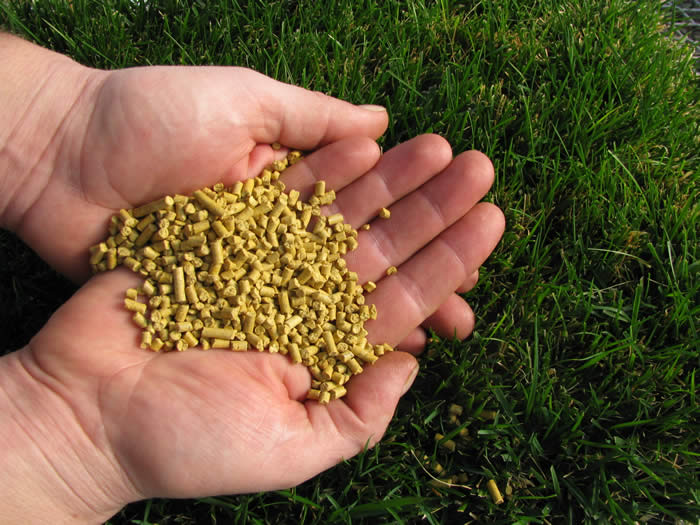A Gardener’s Guide to Eco-Friendly Alternatives
The War on Weeds: A Gardener’s Guide to Eco-Friendly Alternatives
We’ve all been there. You spend hours lovingly tending to your garden, only to be greeted by the unwelcome sight of persistent weeds. The battle against these botanical invaders can feel like an endless struggle.
Traditionally, herbicides like Roundup have been the go-to solution. However, concerns about their safety for human health and the environment have led many gardeners to seek alternative, eco-friendly methods.
This blog is your comprehensive guide to winning the war on weeds without resorting to harsh chemicals. We’ll explore a diverse arsenal of strategies, from time-tested organic solutions to innovative technological advancements.
1. Know Your Enemy: Unveiling the Weeds Invading Your US Lawn
Before choosing a battle plan, it’s crucial to identify your enemy. The vast and diverse climate of the United States fosters a wide range of common garden weeds. Here, we’ll unveil the characteristics of some frequently encountered foes to help you wage a targeted war:
1.1 Annual Broadleaf Blitz: Chickweed & Red Clover
These fast-growing invaders, like chickweed and red clover, complete their life cycle in a single season, focusing their energy on prolific seed production before succumbing to winter’s chill. Their shallow root systems make them susceptible to hand pulling, but their relentless seed production requires vigilance.
- Look for: Broad, flat leaves with lobed or serrated edges. Chickweed forms low-growing mats of tiny green leaves and white flowers, while red clover has distinctive trifoliate leaves with reddish-pink flower heads [1].
1.2 Annual Grassy Guerillas: Crabgrass & Foxtail
These grassy menaces, like crabgrass and foxtail, quickly establish themselves in sunny areas, stealing water and nutrients from your desired plants. Their shallow root systems allow for hand pulling, but their rapid growth and prolific seed production necessitate early intervention.
- Look for: Thin, blade-like leaves that grow in clumps or patches. Crabgrass forms a sprawling mat of reddish-green blades, while foxtail has bristly seed heads that resemble bottle brushes [1].
1.2 Perennial Broadleaf Battleground: Dandelions (x2) & Purslane
These persistent troublemakers, like dandelions (yes, you read that right!), return year after year thanks to their deep taproots that store energy and sprout new growth even after the top is removed. While dandelions can be a cheerful sight for some, their aggressive root systems and ability to spread through wind-dispersed seeds make them unwelcome guests in most cultivated spaces. Purslane, another persistent broadleaf weed, forms low-growing mats and thrives in hot, dry conditions.
- Look for: Distinctive broad leaves for dandelions and low-growing, spreading rosettes for purslane. Both produce bright yellow flowers, though dandelion flowers are solitary on tall stalks, while purslane has smaller flowers nestled amongst the foliage [1].
Knowing the type of weed you’re dealing with allows you to target its vulnerabilities. For annuals, preventing seed germination is key. Perennials require a multi-pronged approach that may involve exhausting their root reserves or smothering their growth.
Source:
- [1] University of California, Agriculture and Natural Resources. (n.d.). Weeds. ANR https://anrcatalog.ucanr.edu/Details.aspx?itemNo=3488
2. The Organic Arsenal: Natural Solutions to Squash Your Weedy Woes
Mother Nature provides a treasure trove of natural weed-fighting options. Here are some of the most effective:
2.1 Mulch: The Guardian of the Garden Bed
Mulch is an unsung hero in the fight against weeds. A thick layer (2-4 inches) of organic mulch, like shredded bark, leaves, or straw, acts as a physical barrier, blocking sunlight from reaching weed seeds and preventing germination. It also retains moisture in the soil, benefiting your desired plants while creating a dry, inhospitable environment for weed growth.
Mulch breaks down over time, adding valuable nutrients to the soil as it decomposes. However, be mindful of using fresh wood chips as mulch, as they can rob nitrogen from the soil as they break down.
2.2 Manual Removal: The Satisfying Sweat
For small areas or targeted weed removal, pulling weeds by hand is a simple and effective option. This method offers complete control over which plants are removed and allows you to focus on young weeds before they establish themselves. It’s also a great way to get some exercise and a sense of accomplishment while communing with your garden.
The key to successful manual removal is to extract the entire root system, preventing regrowth. A weeding fork or dandelion weeder can be helpful tools for stubborn weeds with deep taproots.
2. The Organic Arsenal: Natural Solutions to Squash Your Weedy Woes
We explored the power of mulch as a guardian against weeds. Now, let’s delve into some additional organic solutions in your eco-friendly arsenal:
2.3 Corn Gluten Meal: A Pre-emptive Strike
 Corn gluten meal is a pre-emergent weed control solution derived from a corn processing byproduct. It works by creating a protein film on the soil surface that disrupts the germination process of weed seeds. Apply corn gluten meal before weeds emerge in early spring or late fall. Reapplication may be necessary after heavy rain. While effective against many common weeds like crabgrass and foxtail, corn gluten meal has a limited window of effectiveness and won’t work on established weeds. It’s also important to note that corn gluten meal can be harmful to some desirable plants, so be sure to research its compatibility with your garden before using [2].
Corn gluten meal is a pre-emergent weed control solution derived from a corn processing byproduct. It works by creating a protein film on the soil surface that disrupts the germination process of weed seeds. Apply corn gluten meal before weeds emerge in early spring or late fall. Reapplication may be necessary after heavy rain. While effective against many common weeds like crabgrass and foxtail, corn gluten meal has a limited window of effectiveness and won’t work on established weeds. It’s also important to note that corn gluten meal can be harmful to some desirable plants, so be sure to research its compatibility with your garden before using [2].
2.4 Organic Herbicides: A Targeted Approach
Organic herbicides derived from natural materials like vinegar (acetic acid) or citric acid offer a more targeted approach to weed control. Vinegar is particularly effective on young, tender weeds, while citric acid can target specific broadleaf weeds. These solutions act by desiccating (drying out) the plant tissues they come in contact with. However, effectiveness can vary depending on the concentration, application method, and weather conditions. They may require repeat applications for complete control and may not be suitable for delicate plants [3, 4].
2.5 Saturated Steam: A Steamy Demise
Saturated steam is an eco-friendly method that utilizes high-pressure steam to kill weeds. This approach offers a less labor-intensive alternative to hand pulling, particularly for larger areas. The steam penetrates the plant cell walls, causing them to rupture and kill the weed. While effective on most annual weeds and some perennials, treatments may need to be repeated, especially for deep-rooted perennials. Since steam doesn’t discriminate, it’s crucial to be mindful of nearby desirable plants and cover them if necessary [5].
2.6 Embrace the Power of Beneficial Plants
Consider incorporating beneficial plants into your garden strategy. Certain plants can help suppress weeds by competing for resources like sunlight and space. For example, low-growing groundcovers like creeping phlox or thyme can create a dense mat that discourages weed growth [6].
2.7 Boiling Water: A Quick Fix (Use with Caution!)
Boiling water can be a quick and effective way to eliminate small patches of weeds, particularly young ones or weeds with shallow root systems. However, this method should be used with caution as boiling water can also damage desirable plants and nearby mulch. It’s generally not recommended for large areas due to the time and effort involved [7].
Introducing Weedtechnics: Eco-Friendly Weed Control Solutions

herbicide alternative
While these organic methods are effective for many situations, some weeds prove particularly persistent. For those stubborn invaders, WeedTechnics offers a revolutionary solution: commercial steam weeding machines.
Here’s why WeedTechnics steam weeders are a great option for your eco-friendly weed control strategy:
- Safe and Selective: WeedTechnics steam weeders utilize high-pressure steam to eliminate weeds without harmful chemicals. This targeted approach protects your desired plants and the environment.
- Effective: The intense heat of the steam penetrates the plant cell walls, effectively killing most weeds, including perennials with deep root systems.
- Long-Term Solution: Repeated treatments with a WeedTechnics steam weeder can help prevent weed seeds from germinating, reducing future weed problems.
- Versatile: WeedTechnics steam weeders are suitable for various applications, from walkways and patios to flower beds and vegetable gardens.
 Considering a WeedTechnics steam weeder for your garden? Visit our website or contact us today to learn more about our innovative and eco-friendly weed control solutions!
Considering a WeedTechnics steam weeder for your garden? Visit our website or contact us today to learn more about our innovative and eco-friendly weed control solutions!
Remember: A successful weed control strategy often involves a combination of these methods. By understanding the types of weeds in your garden and implementing a multi-pronged approach, you can achieve a beautiful, weed-free haven without resorting to harsh chemicals.
Sources:
- [2] Iowa State University. (n.d.). Corn Gluten Meal for Weed Control. Extension and Outreach https://www.hort.iastate.edu/horticulture-research/corn-gluten-meal-research/
- [3] Murphy, J. (2013, July 27). Are There Organic Alternatives to Glyphosate? Rutgers University. [https://plant-pest-advisory.rutgers.edu/](https://plant-pest-advisory.rutgers
Jeremy Winer has 30 years of practical experience in implementing integrated holistic approach to organic weed management across urban landscapes, recreational parklands and wetlands. He currently runs Weedtechnics specialising in providing chemical reduction and non-toxic weed control programs to municipalities across Australia. He has developed, patented, manufactured, and commercialised the Steamwand method of creating saturated steam for vegetation control.
Labels
- Effective Steam Weeding for Sensitive Garden Beds
- Are you considering organic herbicides?
- A Hidden Threat to Human Health and the Environment- Herbicides
- The Growing Demand for Non-Chemical Weed Control: Why Landscape Contractors Should Consider Satusteam™ technology
- Saturated Steam Weeding: A Profitable and Sustainable Business Opportunity
- Toxin-Free Weed Control with Weedtechnics’ Patented Steam Weeding Technolog






